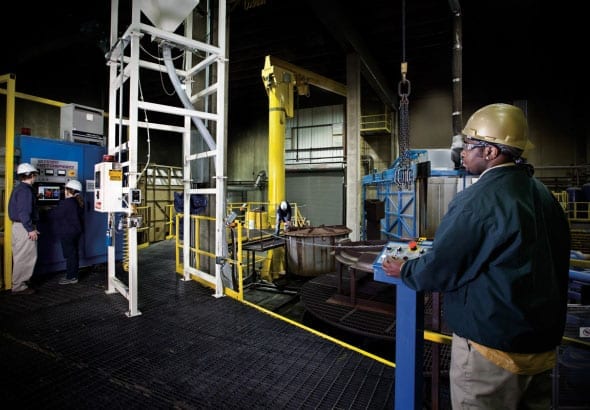Controlling heat to avoid hazardous reactions
Hydrofluosilicic acid is used in water fluoridation, ceramic production, electroplating, bottle sterilizing, brewing and many other applications. This colorless, fuming liquid presents a host of challenges in storage:
- It decomposes in heat, giving off toxic fluoride compounds, which may react violently with alkaline materials.
- Hydrofluosilicic acid is corrosive to most metals – and it attacks glass and stoneware.
- Like lye and sodium hypo, hydrofluosilicic acid has a tendency to find leak paths.
- The chemical is incompatible with strong alkalis and strong concentrated acids. It reacts with oxidizing agents, combustible solids and organic peroxides.
- Its reaction with metals produces flammable hydrogen gas.
A complete system equipped with specialized features can reduce the risks associated with this toxic chemical.
The Poly Processing Hydrofluosilicic Acid System
Hydrofluosilicic acid is an extremely dangerous chemical. Human contact with it can result in severe injury or fatality. But when the chemical is controlled in a stable environment, risk can be dramatically reduced.
XLPE tanks are ideal in this situation. The thermosetting of XLPE’s polymer chains acts as a netting to prevent permeation, leakage or seepage.
With its full drain design, a built-in IMFO® flange can help eliminate any buildup of sediment, lessening the potential for lead and arsenic deposits over time. The IMFO® system’s design also keeps the tank intact, which is important for chemicals that try to find leak paths. If an IMFO® isn’t an option, wetted fittings should be kept to an absolute minimum to avoid failure.
If secondary containment is not available, a SAFE-Tank® is recommended instead of an IMFO® tank. This tank within a tank greatly reduces the chance for leaks.




